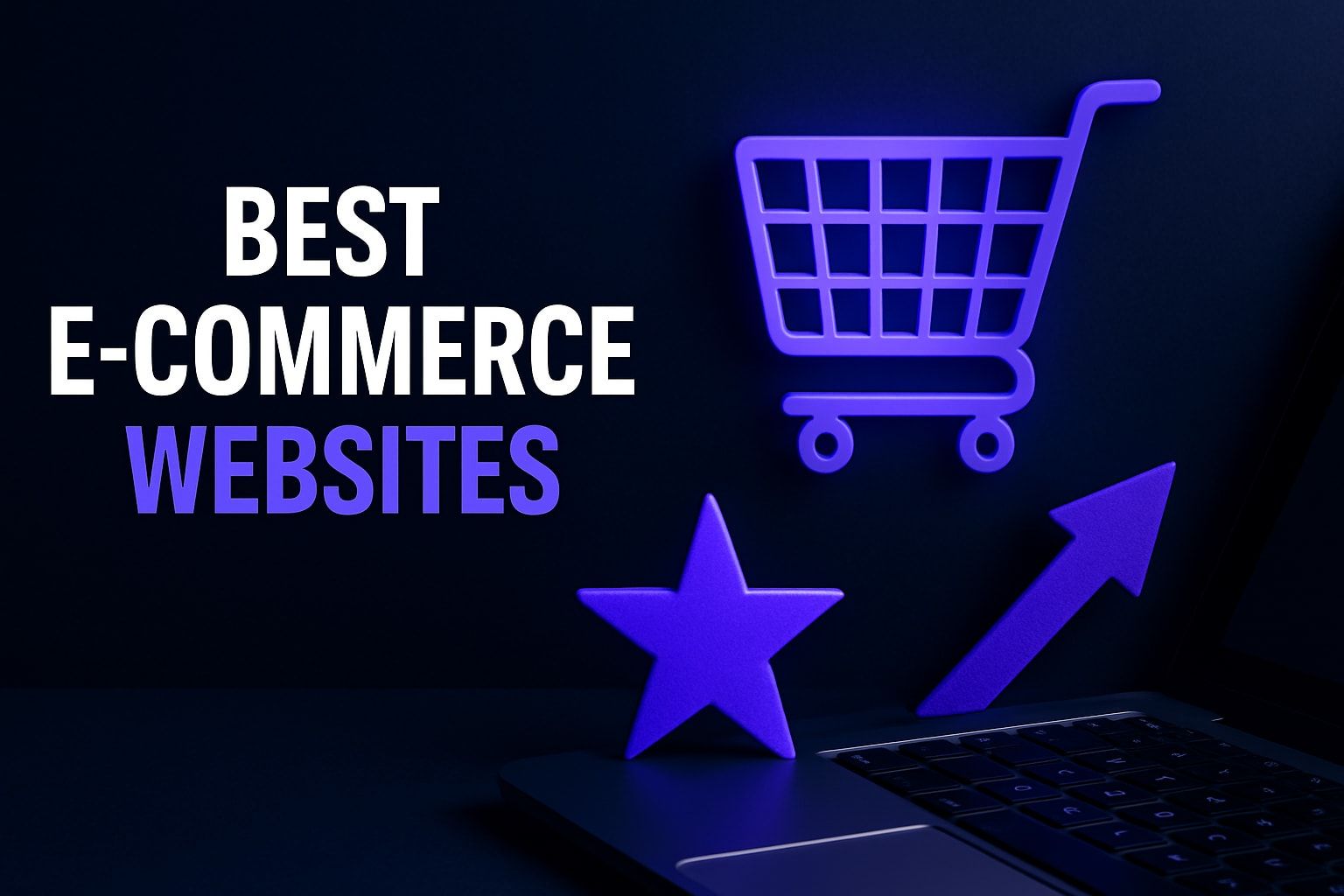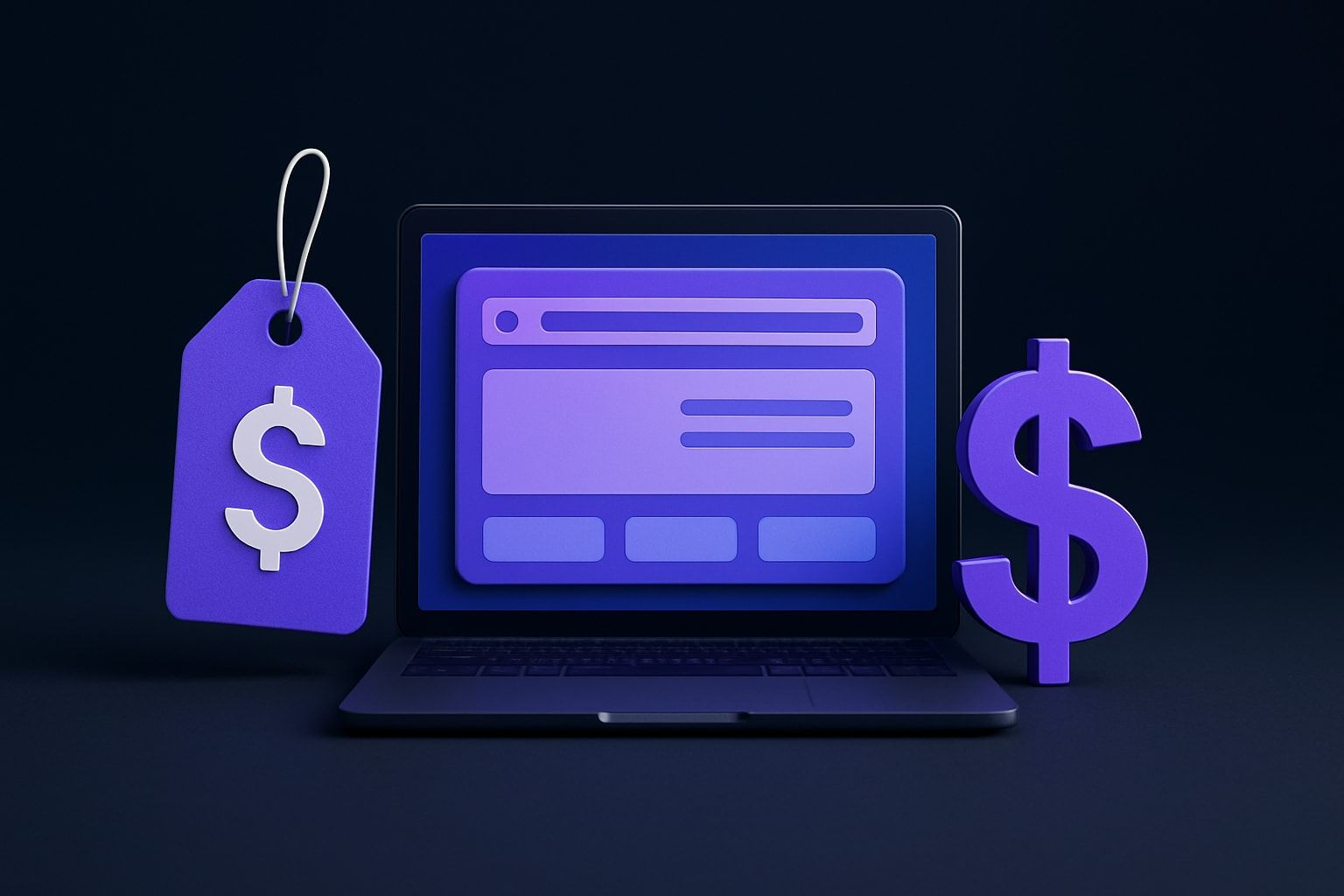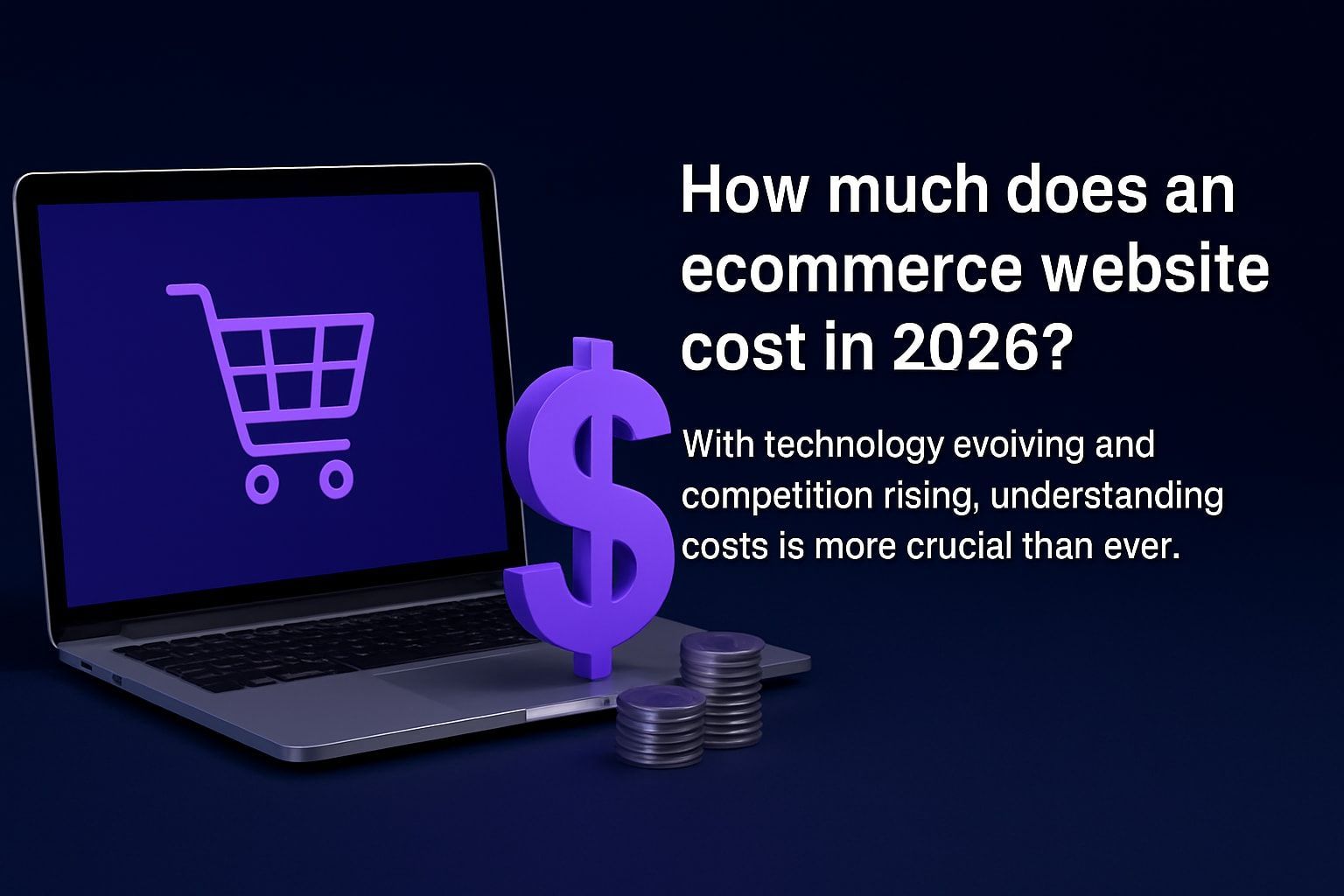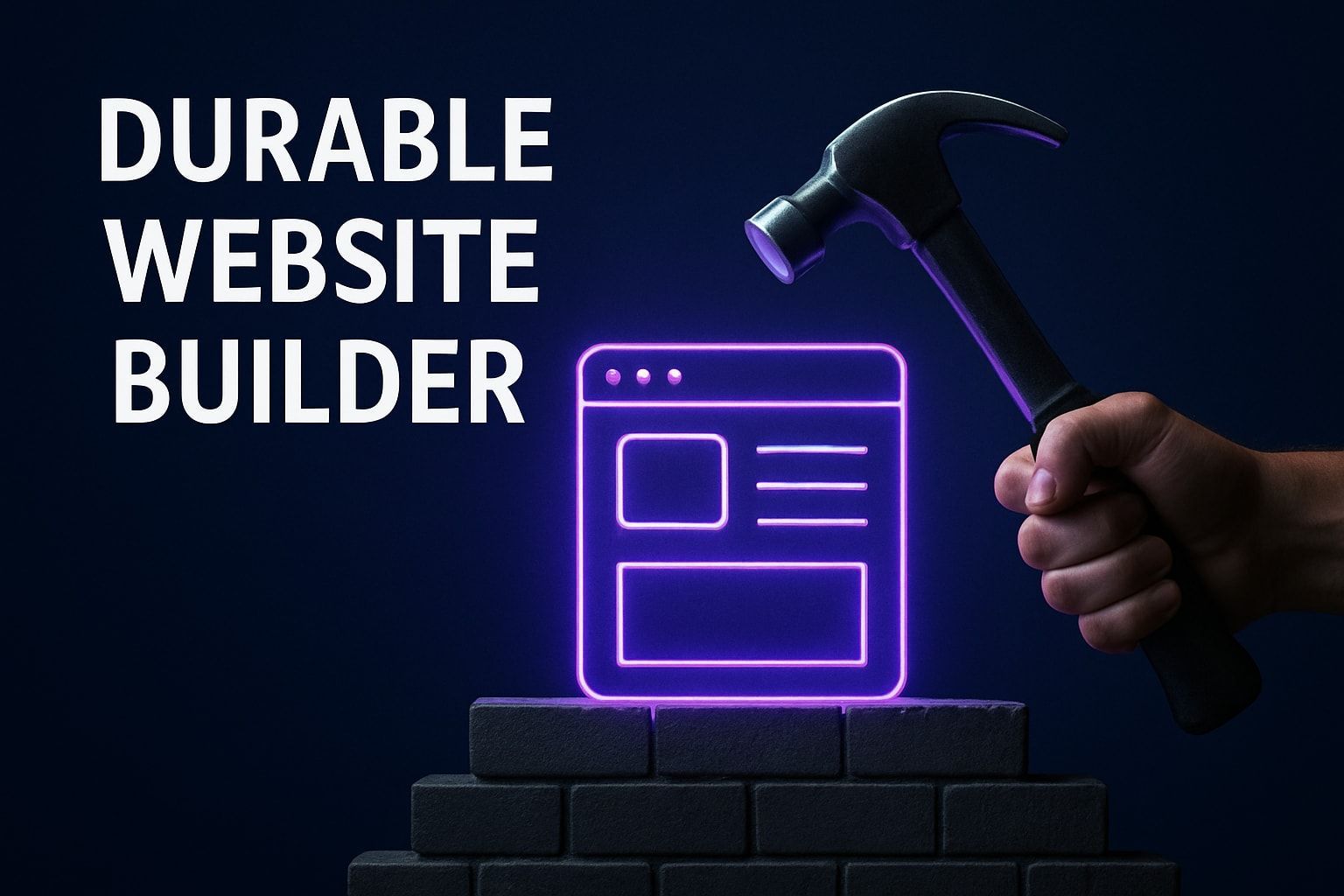The Ultimate Guide to Using the Website for Beginners (2025)
Starting out in 2025, the sheer number of choices and steps involved in using the website for the first time can feel overwhelming. Whether you're aiming to launch a business, showcase your creative work, or build a personal brand, mastering modern website platforms is now essential for success.
This guide will break down every step, ensuring that using the website becomes an accessible and stress-free process—even if you’re a total beginner. You’ll find actionable steps, expert tips, and proven strategies designed to build your confidence from day one.
Follow along as we cover the basics, setting up your account, exploring features, customizing your site, optimizing for growth, and troubleshooting common issues. Let’s get started!
Understanding the Website Platform: Key Concepts for Beginners
Starting your journey with using the website can feel like stepping into a new city—exciting, but a little overwhelming. To make things easier, let's break down the basics, unravel key terms, and explore how modern platforms are designed to help beginners thrive. By the end of this section, you'll feel more confident about using the website, no matter your experience.
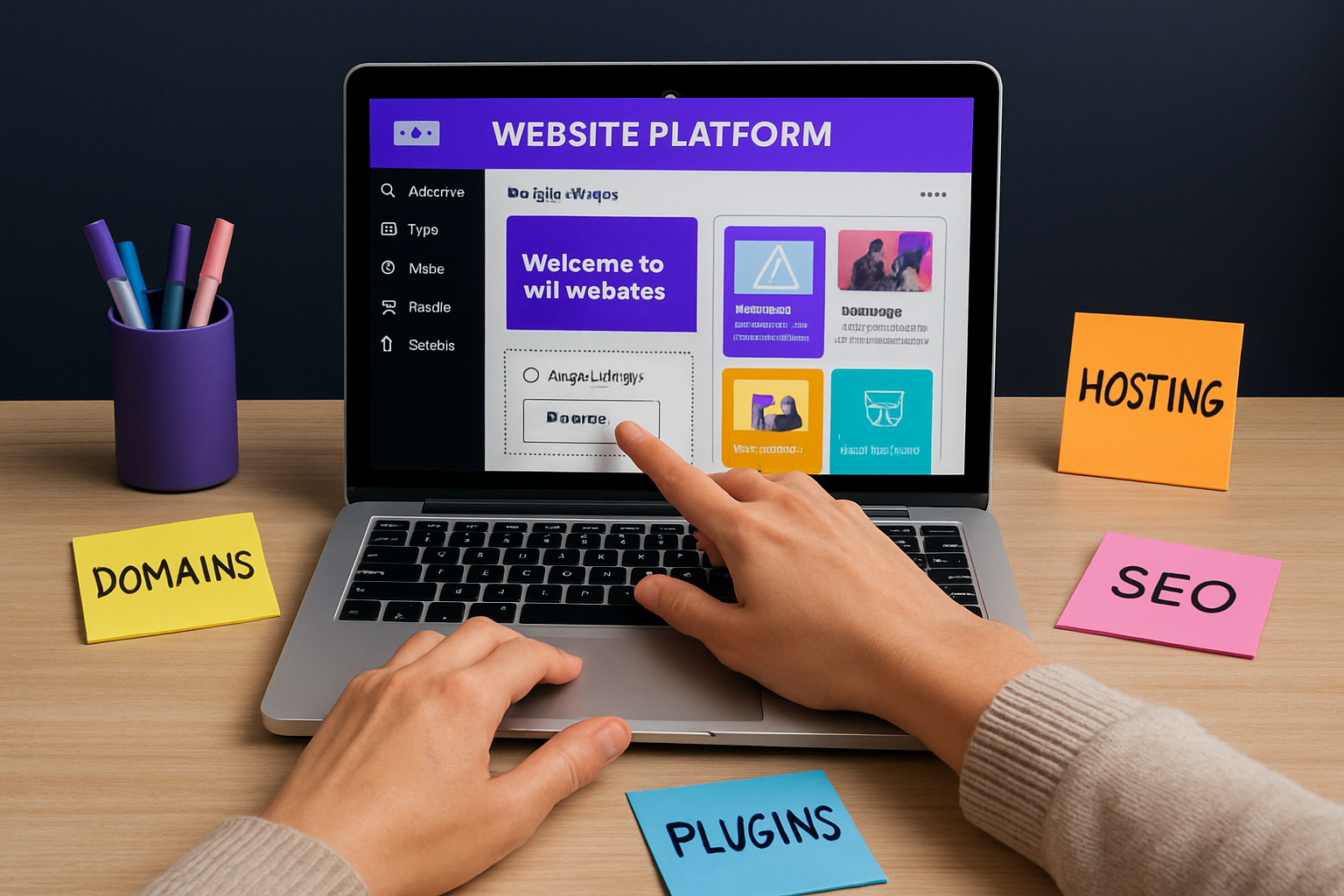
What Is a Website Platform? Definitions and Evolution
A website platform is the foundation that lets you build, manage, and grow your online presence. Imagine it as the engine powering your digital storefront, blog, or portfolio. In the early days, using the website meant coding static pages by hand. Today, platforms have evolved dramatically.
Now, there are several types:
| Platform Type | Description | Examples |
|---|---|---|
| CMS | Content Management System | WordPress, Joomla |
| Website Builder | Drag-and-drop, template-based | Wix, Avantiy, Squarespace |
| eCommerce | Online store creation | Shopify, WooCommerce |
| Portfolio | Showcasing creative work | Behance, Dribbble |
| Community | Forums, social groups | Mighty Networks, Discourse |
In 2025, trends like AI integration, mobile-first design, and low-code/no-code tools are transforming how people are using the website. For a deeper look at how artificial intelligence is shaping modern platforms, check out this resource on AI integration in website platforms.
Essential Terminology Every Beginner Should Know
When using the website, you'll run into some common terms. Knowing these helps you navigate with confidence:
- Domain: Your website's address (like example.com)
- Hosting: The service that stores your site files
- SSL: Security certificate (shows as https)
- Templates: Pre-made designs you can customize
- Plugins/Widgets: Add-ons for extra features
- Responsive Design: Site looks good on all devices
Understanding these terms is crucial. It’s like learning the basics of a new language before traveling—suddenly, using the website becomes much less intimidating.
How Modern Platforms Empower Beginners
Modern platforms are built with beginners in mind. Drag-and-drop editors allow you to design pages visually, while pre-designed templates speed up the setup. Many platforms now include built-in SEO and analytics tools, so you can start using the website to reach more people from day one.
AI assistants are a game-changer, helping with content creation, design suggestions, and even troubleshooting. According to WebsiteBuilderReport, 78% of new websites in 2024 used automated builders—proof that using the website is now easier than ever.
The Beginner’s Mindset: Common Fears and How to Overcome Them
It’s natural to feel nervous about using the website, especially if you’re worried about making mistakes or facing technical hurdles. But here’s the truth: most fears are based on myths.
Experimentation is your friend. Modern platforms are designed so you can test, tweak, and undo changes safely. Plus, there’s a wealth of community support, help centers, and tutorials to guide you as you start using the website. Remember, every expert was once a beginner.
Choosing the Right Platform for Your Needs
Before using the website, think about your goals. Do you want a blog, an online store, a portfolio, or a business site? Make a checklist of must-have features for your project.
Compare free and paid options carefully. Some platforms offer generous free plans, while others unlock advanced features with subscriptions. By matching your needs with the right platform, you’ll set yourself up for success when using the website.
Step-by-Step: Setting Up Your Account and Getting Started
Starting out can feel overwhelming, but breaking each step into manageable parts removes the guesswork from using the website for the first time. Let’s walk through everything you need to know, from registration to your first published page.
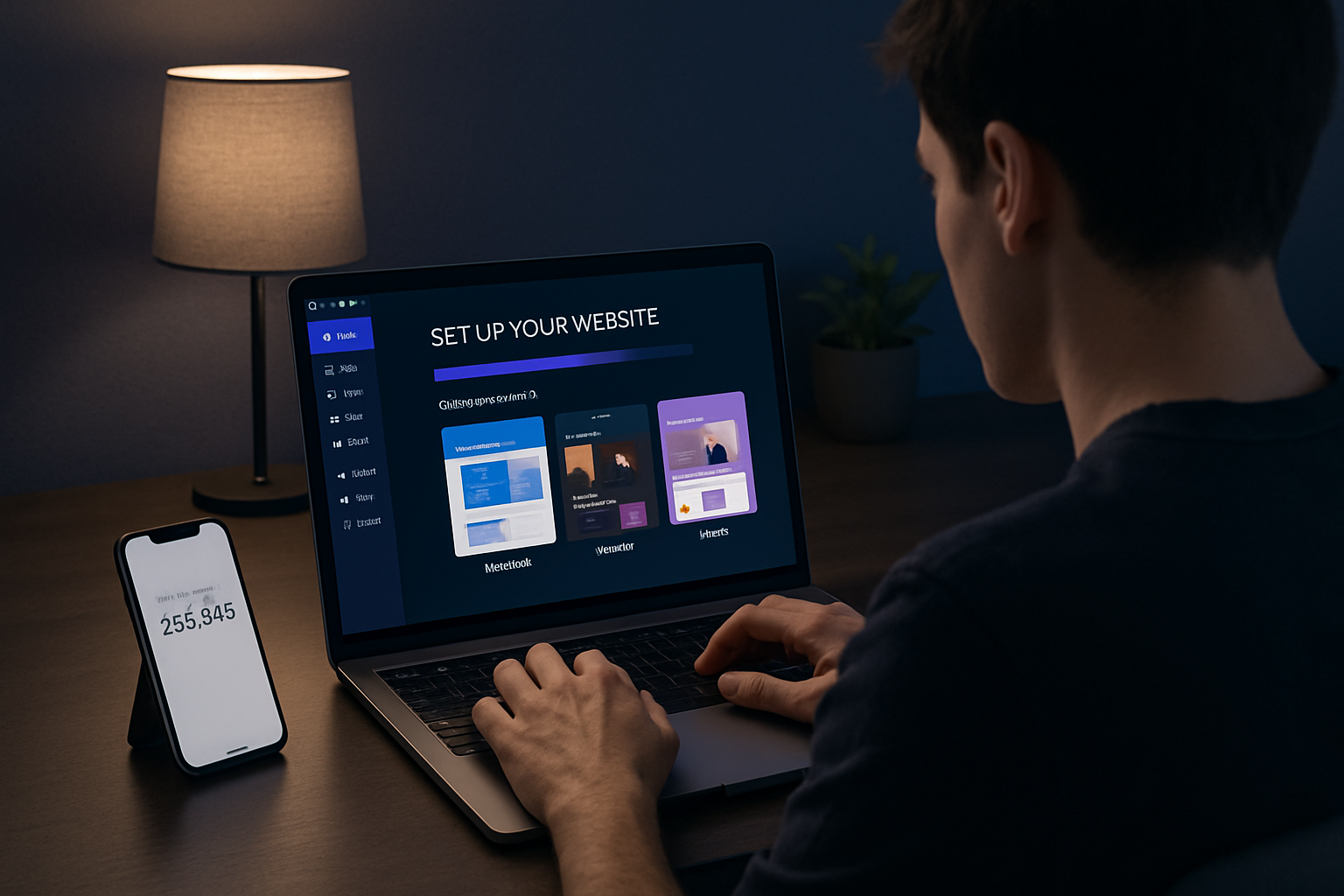
Creating Your Account: Registration and Verification
The first step in using the website is creating your account. Most platforms offer several registration options: you can sign up with your email, use a social login (like Google or Facebook), or even register with your phone number. Choose the method you’re most comfortable with.
After signing up, you’ll receive a verification code or link. Enter this code, or click the link, to activate your account. This step protects your data and ensures only you can access your new website.
Security is crucial from the start. Create a strong password using a mix of letters, numbers, and symbols. Enable two-factor authentication (2FA) if available. Review privacy settings to control what personal info is visible while using the website.
Navigating the Dashboard: First Look and Key Sections
Once inside, you’ll land on the dashboard—the command center for using the website. Here, you’ll find key menu items like Pages, Design, Settings, Analytics, and Support. Each section helps you manage a different part of your site.
Take a moment to explore the dashboard layout. Many platforms let you personalize the sidebar, pin favorite tools, or adjust theme colors for easier navigation while using the website. Familiarity with the dashboard streamlines your workflow and builds confidence.
If you ever feel lost, look for guided tours or onboarding checklists. These features highlight where to find core tools and make using the website less intimidating for beginners.
Initial Setup: Connecting Your Domain and Hosting
With your account ready, it’s time to connect your domain and hosting. Start by picking a memorable domain name that reflects your brand or content. Many platforms let you search for available names directly from the dashboard.
Once you’ve registered your domain, link it to the platform. This usually involves updating DNS settings or following a step-by-step wizard. Most builders make this process straightforward, ensuring using the website is smooth from the start.
Don’t forget SSL setup! An SSL certificate encrypts data and displays the padlock icon, building trust with visitors. Secure connections are essential for SEO and user confidence when using the website.
Selecting and Applying a Template
Choosing the right template is a pivotal part of using the website. Templates set the visual tone and structure for your content. Browse template libraries by industry or style to find a look that matches your vision.
Preview templates to see how they’ll appear on desktop and mobile. Most platforms let you switch templates easily, so don’t worry about making the perfect choice immediately. When you’re ready, apply your favorite and start customizing colors and fonts.
For inspiration or direct access to template options, you can explore website templates and see how different layouts can transform your site. Remember, templates are just a starting point—personal touches make your site unique while using the website.
Adding Essential Pages: Home, About, Contact, Blog/Shop
Every credible site needs a handful of essential pages. Start with a Home page that welcomes visitors and sets expectations. Add an About page to share your story or mission. A Contact page lets people reach you, and a Blog or Shop page expands your content or sales.
Use clear layouts and simple navigation so visitors can easily find what they need when using the website. Many platforms offer page-building wizards or pre-filled sections to help you craft compelling content without starting from scratch.
Keep your writing friendly and concise. Use bullet points, images, and calls to action to guide readers through each page. This ensures a positive experience for everyone using the website.
Platform-Specific Tips: What to Expect on Different Builders
Not all website platforms are created equal, so expect unique onboarding experiences. WordPress offers robust customization but may require more setup. Wix and Avantiy feature intuitive drag-and-drop editors, making using the website easy for first-timers. Shopify is tailored for eCommerce, while other builders focus on portfolios or communities.
Look for tutorials or onboarding wizards specific to your chosen platform. These guides walk you through setup, highlight useful features, and answer common questions. Embrace experimentation—trying new tools is a key part of using the website effectively.
If you run into trouble, most platforms have help centers or live chat support. Don’t hesitate to reach out. Remember, every expert was once a beginner using the website for the first time.
Exploring Core Features and Tools: What Every Beginner Should Master
Mastering the essentials of using the website is the key to unlocking your platform’s full potential. Let’s break down the core features every beginner should know, so you can build, manage, and grow your site with confidence.

Content Creation: Adding and Editing Text, Images, and Media
Creating engaging content is at the heart of using the website. Most platforms offer visual editors, making it easy to add headings, paragraphs, and lists. You can drag and drop images, resize them, and embed videos with just a few clicks.
- Use the “Add Media” button to upload images or files.
- Insert YouTube or Vimeo links to display videos directly.
- Format text using bold, italics, and bullet points.
Here’s a quick code example for embedding a video:
<iframe width="560" height="315" src="https://www.youtube.com/embed/example" frameborder="0" allowfullscreen></iframe>
Experiment with different content types until your pages reflect your vision. With practice, using the website for content creation will become second nature.
Design Customization: Templates, Themes, and Layouts
Personalizing your site’s look and feel is a crucial part of using the website. Start by choosing a template that matches your style or industry. Most platforms provide a wide range of themes, each with customizable color schemes and font options.
- Adjust page layouts by adding, moving, or removing sections.
- Change backgrounds, fonts, and color palettes in the design settings.
- Preview your site on desktop and mobile to ensure a consistent experience.
Remember, responsive design ensures your site looks great on any device. Take advantage of built-in tools to check for mobile friendliness as you’re using the website.
SEO Fundamentals: How to Make Your Site Discoverable
Making your site easy to find is vital when using the website. Optimize page titles, meta descriptions, and keywords for every page. Built-in SEO tools help you monitor your progress and suggest improvements.
- Set custom URLs for important pages.
- Use alt text for all images.
- Submit your sitemap to search engines.
For more guidance, check out these Essential SEO optimization tips to boost your visibility from day one. Consistently applying SEO best practices while using the website will help attract more visitors over time.
Integrations and Add-Ons: Expanding Functionality
Expanding what you can do while using the website is easy with integrations and add-ons. Most platforms offer app marketplaces, letting you connect tools for email marketing, social media, calendars, and more.
- Add contact forms, maps, or booking widgets.
- Integrate Google Analytics for in-depth tracking.
- Connect with payment gateways if you plan to sell online.
Browse the available integrations and experiment with new features. As you grow, using the website’s add-ons can automate tasks and enhance your visitors’ experience.
User Management: Collaborators, Permissions, and Roles
If you’re not building your site alone, user management is essential when using the website. Invite team members or contributors through the dashboard. Assign roles like admin, editor, or viewer to control who can edit content or settings.
- Admins have full access to all site features.
- Editors can create and update content but not change core settings.
- Viewers can see content but not make edits.
Set strong passwords and review permissions regularly. This ensures security and smooth teamwork as you’re using the website with others.
Analytics and Tracking: Measuring Performance
Understanding your site’s performance is crucial for long-term success when using the website. Set up Google Analytics or use built-in tools to track visitors, bounce rates, and conversions.
Here’s a simple table to summarize key metrics:
| Metric | What It Tells You |
|---|---|
| Visitors | How many people visit |
| Bounce Rate | Who leaves quickly |
| Conversions | Actions like sign-ups |
Review your analytics regularly to spot trends and adjust your strategy. The more you learn from your data, the more effective you’ll be at using the website for growth.
Customizing and Personalizing Your Website
Ready to make your site truly yours? Customizing and personalizing your website is where the magic happens. This is the stage where using the website transforms from a generic template into a unique online destination that reflects you or your brand.
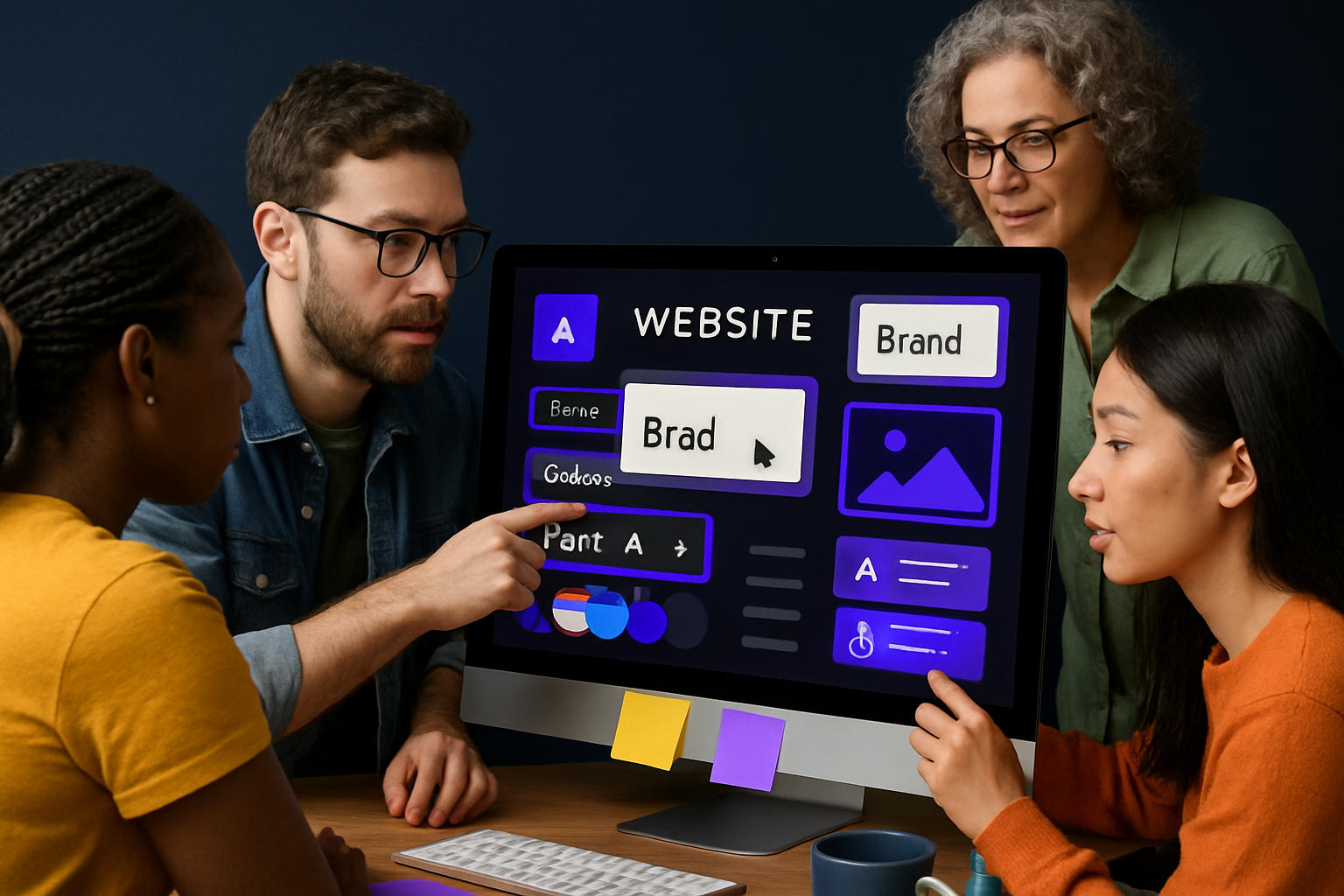
Branding Basics: Logo, Colors, and Fonts
Your brand identity is the first thing visitors notice when using the website. Start by uploading your logo and favicon—these small icons appear in browsers and bookmarks, helping users recognize your site instantly.
Next, select your brand colors and fonts. Most platforms offer palettes and font libraries. For a consistent look, pick 2-3 colors and fonts that match your brand’s personality.
| Branding Element | Purpose | Example |
|---|---|---|
| Logo | Visual identity | Mountain silhouette |
| Colors | Brand mood & recognition | #8b3bff, #fff, #222 |
| Fonts | Readability & personality | Sans-serif, Serif |
A strong visual identity makes using the website memorable and professional.
Navigation and Site Structure Best Practices
Visitors should never feel lost when using the website. Create intuitive menus and navigation bars. Group similar pages under clear headings, and keep the path to key pages (like Contact or Shop) obvious.
Consider these tips:
- Use simple labels: “About Us,” “Services,” “Contact.”
- Limit top-level menu items to 5–7.
- Organize pages logically, avoiding clutter.
For inspiration, explore Web design industry trends 2025 to see how top sites create seamless navigation and enhance user experience.
Personalizing Content for Your Audience
Personal touches set your site apart. Use dynamic greetings or localized messages to make visitors feel welcome when using the website. Add testimonials or customer reviews to build trust quickly.
Some personalization ideas:
- Display the user’s name after login.
- Show products or posts based on visitor interests.
- Localize content for different regions.
Collect feedback through forms or surveys to keep improving your approach.
Advanced Customization: Widgets, Plugins, and Custom Code
Take using the website further by adding widgets and plugins. Forms, live chat, booking tools, and calendars help you interact with visitors.
Platforms often allow custom code snippets for advanced features. Use plugins sparingly—too many can slow your site or introduce security risks.
Tips for advanced customization:
- Only add trusted plugins.
- Test new features before publishing.
- Monitor site performance after changes.
Accessibility and Inclusivity
Ensuring everyone can access your site is essential. When using the website, follow these steps to meet accessibility guidelines:
- Add descriptive alt text to images.
- Use readable fonts and high-contrast colors.
- Enable keyboard navigation for menus and forms.
Remember, about 15% of the global population has a disability, so inclusive design is crucial.
Testing and Previewing Before Launch
Before the big reveal, preview using the website on desktop, tablet, and mobile. Most platforms offer a preview mode so you can see exactly how your site appears across devices.
Use this simple pre-launch checklist:
- Check all links and buttons.
- Proofread content for typos.
- Test forms and interactive elements.
- Review branding and navigation.
A careful review ensures using the website is smooth and enjoyable for every visitor.
Optimizing for Growth: Essential Strategies for New Websites
Launching your site is just the beginning. Growth requires a thoughtful approach, combining technical know-how, creative engagement, and data-driven decisions. With so many strategies for using the website effectively, it can feel overwhelming. Let’s break down the essentials so you can build momentum from day one.
SEO Optimization: Beyond the Basics
SEO remains the foundation of using the website for visibility. Go beyond simple keywords by adding structured data, sitemaps, and schema markup to help search engines understand your content. Local SEO is crucial for small businesses—set up Google My Business and encourage reviews.
AI-powered SEO tools now recommend keywords, analyze competitors, and optimize content in real time. Sites with advanced SEO attract double the organic traffic. For more on how AI can boost your optimization efforts, explore AI website builder features.
Speed and Performance Enhancements
Speed is non-negotiable. Visitors expect fast load times, especially on mobile. Compress images, enable lazy loading, and use caching plugins to keep your site snappy. Choose reliable hosting and monitor Core Web Vitals to measure real-world performance.
Mobile-first design is a must. With the majority of users accessing sites on their phones, optimizing for mobile is essential when using the website. Check out the latest mobile web usage statistics 2025 to see why this matters more than ever.
Security Essentials: Protecting Your Site and Visitors
Security is vital for trust and long-term growth. Always use SSL certificates, keep your platform and plugins updated, and schedule regular backups. Watch for common threats like malware and phishing attacks.
Follow a basic security checklist:
- Enable two-factor authentication
- Use strong, unique passwords
- Limit user permissions
By using the website securely, you protect both your brand and your visitors’ data.
Engaging Your Audience: Content, Newsletters, and Social Media
Content is your voice. Regularly update your blog or news section with valuable posts. Integrate email signup forms and send newsletters to keep your audience informed.
Social media links and sharing buttons help amplify your reach. Using the website to connect with your community builds loyalty and attracts new visitors. Encourage feedback and respond to comments to foster engagement.
Monetization Options for Beginners
Ready to turn your effort into income? There are several ways to monetize, from adding eCommerce features and payment gateways to launching memberships or offering exclusive content. Affiliate marketing is another popular option.
If you’re considering an online store, the ecommerce website setup guide provides step-by-step help for using the website to sell products or services. Remember, 35% of new site owners monetize within their first year.
Tracking Growth and Setting Goals
Growth is measurable. Use analytics tools to track visitors, bounce rates, and conversions. Set clear milestones—like reaching your first 1,000 visitors or achieving a specific sales target.
Create a 90-day plan for using the website, focusing on steady improvements. Review your data regularly to spot trends and adjust your strategy. Celebrate small wins and keep pushing forward.
Troubleshooting and Support: Overcoming Common Beginner Challenges
Starting out and using the website can feel daunting, especially when unexpected issues arise. But don’t worry—every beginner faces hiccups, and knowing how to troubleshoot can make your journey smoother. Let’s break down the most common challenges and how to overcome them, so you can confidently move forward.
Common Technical Issues and How to Fix Them
When using the website, the most frequent issues include login troubles, broken links, and missing images. These can seem intimidating, but most have straightforward solutions.
- Login problems: Double-check your credentials, clear your browser cache, and reset your password if needed.
- Broken links: Use your platform’s link checker or manually review your pages.
- Missing images: Re-upload images and ensure file paths are correct.
For example, if you encounter a 404 error, use this simple checklist:
- Confirm the page URL is spelled correctly.
- Check if the page was deleted or moved.
- Update internal links to point to the new address.
With patience and practice, using the website becomes less stressful as you learn to resolve issues confidently.
Finding Help: Support Resources and Communities
If you’re stuck while using the website, don’t hesitate to seek help. Most platforms offer robust support resources:
- Help centers: Step-by-step guides and FAQs.
- Live chat: Instant assistance for urgent issues.
- User forums: Connect with other beginners and experienced users.
With the rapid growth in website builder adoption, community support is stronger than ever. Many users resolve problems faster by engaging with forums and discussion groups, ensuring you never feel alone during your journey.
Updating and Maintaining Your Website
Keeping your site up to date is essential for security and performance. Using the website regularly means you should:
| Task | Frequency |
|---|---|
| Content updates | Weekly |
| Plugin updates | Monthly |
| Backups | Weekly |
| Security scans | Monthly |
Set calendar reminders to stay on top of updates. Regular maintenance protects your site from vulnerabilities and keeps visitors’ trust intact.
Learning and Improving: Continuous Skill Development
Mastering using the website doesn’t happen overnight. Dedicate time each week to learning new features or design techniques.
- Tutorials: Most platforms offer free video or written guides.
- Webinars: Join live sessions for expert tips.
- Courses: Explore beginner-friendly courses to deepen your skills.
The more you experiment and explore, the more confident you’ll become. Small, consistent improvements add up quickly over time.
When to Seek Professional Help
Sometimes, using the website goes beyond your current skill set. If you face complex issues, consider hiring a professional.
- Web designers: For advanced design or branding.
- Developers: For custom features or troubleshooting code errors.
- SEO experts: To boost your site’s visibility.
Set a budget and research reputable professionals before making a decision. Investing in expertise can save time and prevent costly mistakes.
Future-Proofing Your Website
Digital trends evolve rapidly. To ensure your site stands the test of time, regularly review new features and platform updates.
If your needs change or better technology emerges, consider migrating to a more advanced platform. Staying adaptable ensures using the website remains effective, secure, and future-ready.
Now that you’ve got a clear roadmap for building your first website—from understanding the basics through customizing and optimizing for growth—it’s time to put your knowledge into action. With Avantiy’s beginner-friendly tools, you don’t need to worry about coding or complicated tech; instead, you can focus on bringing your ideas to life and making an impact online. If you’re ready to take that next step, why not
Get Started for Free? You’ll be amazed at how quickly you can create a site that looks professional and stands out in 2025!
Start building your new website today
No credit of debit card required start building today

